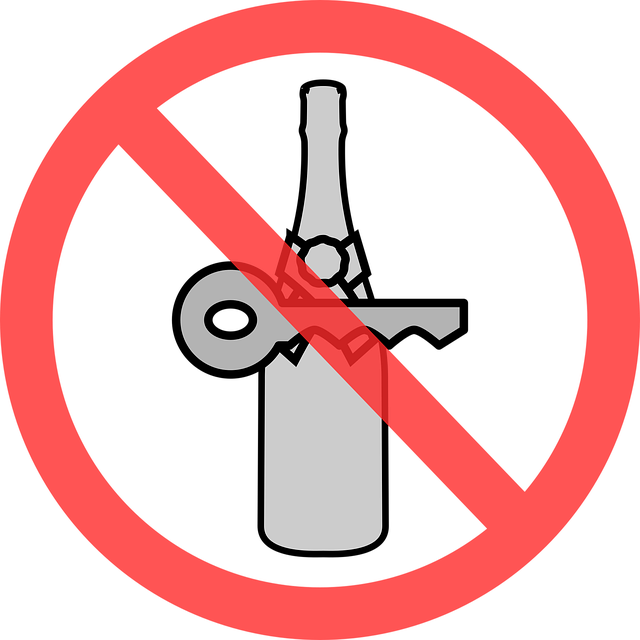Rural areas face unique challenges in DUI prevention due to lower population densities and limited resources compared to urban centers. Impounded vehicles, caused by DUI incidents or registration issues, exacerbate storage and transportation problems. To address these, rural communities must implement proactive strategies like educational campaigns, enhanced roadside checks, and improved communication between authorities and residents. Organizations dedicated to Rural Community DUI Prevention offer legal guidance for drivers facing impoundment, emphasizing the need for timely action to resolve fair and efficiently. Through community initiatives, such as awareness campaigns, alternative transport options, and educational programs, rural areas strive to significantly reduce DUI incidents, prioritizing safety for all residents.
In rural communities, impounded vehicles following DUI arrests pose unique challenges. This article delves into understanding the interplay between strict DUI laws and the specific dynamics of rural areas, where access to transportation is often limited. We explore the profound impact of DUIs on these communities and examine strategies to prevent such incidents. From outlining drivers’ rights during impoundment to providing practical steps for release, this guide offers valuable resources for both residents and authorities aiming to enhance Rural Community DUI Prevention.
- Understanding Impounded Vehicles and DUI Laws in Rural Communities
- The Impact of DUI on Rural Areas: A Unique Challenge
- What Happens When a Driver is Arrested for DUI?
- Rights and Resources for Drivers Facing Impoundment After a DUI
- Navigating the Release Process: Steps to Take
- Community Initiatives for Safer Driving: Preventing DUIs in Rural Settings
Understanding Impounded Vehicles and DUI Laws in Rural Communities

In rural communities, the issue of impounded vehicles and DUI (Driving Under the Influence) prevention takes on unique dimensions. These areas often lack the dense population and extensive law enforcement resources found in urban centers, leading to challenges in enforcing DUI laws effectively. Impounded vehicles, typically those involved in DUI incidents or with outstanding registration or inspection issues, pose a particular problem due to limited storage facilities and transportation options.
Rural community residents may face longer waits for impounded vehicle release compared to their urban counterparts. This delay can be attributed to fewer towing companies operating within the area and reduced law enforcement presence. As such, rural communities must focus on proactive DUI prevention strategies that take into account these unique circumstances. Implementing educational campaigns, enhancing roadside checks, and improving communication between local authorities and residents can all contribute to a safer Rural Community DUI Prevention effort.
The Impact of DUI on Rural Areas: A Unique Challenge

In rural areas, the impact of Driving Under the Influence (DUI) presents a unique challenge due to lower population densities and limited access to resources compared to urban or suburban regions. The absence of heavy traffic and dense metropolitan landscapes means that DUI incidents can go undetected for longer periods, allowing potential offenders to pose risks to isolated communities. Rural areas often lack dedicated law enforcement resources tailored specifically for DUI prevention, which exacerbates the problem.
The low population density also contributes to a reduced presence of public transportation and designated driving programs. This makes it more challenging for rural residents to access alternative transportation options after consuming alcohol, increasing the likelihood of individuals driving under the influence. As such, Rural Community DUI Prevention requires targeted initiatives that consider these unique circumstances, focusing on education, enforcement, and accessibility to mitigate the risks associated with DUI in these areas.
What Happens When a Driver is Arrested for DUI?

When a driver is arrested for DUI in a rural community, the process begins with their removal from the road to ensure public safety. Law enforcement officers will administer field sobriety tests to assess the driver’s impairment level. If the individual fails these tests or exhibits signs of intoxication, they are placed under arrest and their vehicle is impounded. The local police department will then proceed with the legal procedures, which include booking the driver and confiscating any alcohol or drugs present in the vehicle.
In rural areas, where resources may be more limited compared to urban centers, DUI prevention efforts often rely on close community cooperation. Impounded vehicles serve as a crucial component of this strategy, as they prevent intoxicated drivers from getting behind the wheel again immediately after their arrest. This measures, coupled with heightened awareness and education initiatives in Rural Community DUI Prevention, play a vital role in reducing DUI-related incidents and keeping rural roads safer for all residents.
Rights and Resources for Drivers Facing Impoundment After a DUI

When facing impoundment after a DUI, drivers in rural communities have specific rights and resources available to them. Understanding these is crucial for navigating the legal process effectively. In many cases, officers are required to provide notice and information about options for releasing your vehicle, including potential bail or bond procedures. This is especially important as rural areas may have less accessible public transportation, making impoundment particularly disruptive.
Several organizations offer assistance in Rural Community DUI Prevention, providing guidance on legal rights and helping individuals navigate the complex system. These resources can aid in understanding release options, negotiating with authorities, and arranging for alternative transportation. Drivers should also be aware of their right to challenge the impoundment if they believe it was unjust or improper, ensuring a fair process during what can be a stressful time.
Navigating the Release Process: Steps to Take

Navigating the release process after your vehicle has been impounded due to a DUI (Driving Under the Influence) can be daunting, especially in rural communities where legal resources might be limited. The first step is to gather all necessary documentation, including proof of identity, insurance, and ownership. It’s crucial to understand the local laws and regulations regarding DUI impounds, as procedures can vary significantly from one jurisdiction to another.
Once you have your documents ready, contact a trusted attorney or legal aid organization specializing in DUI cases and rural community prevention. They will guide you through the specific steps required to release your vehicle, which often involves posting bail, providing proof of financial responsibility, and attending any mandated court appearances. Remember, acting promptly is essential; delays can result in extended impoundment and additional fees.
Community Initiatives for Safer Driving: Preventing DUIs in Rural Settings

In many rural communities, where access to public transportation may be limited, addressing Drunk Driving (DUI) is a unique challenge. However, innovative community initiatives are stepping up to make safer driving a priority. These efforts focus on raising awareness about the dangers of impaired driving and providing alternatives for those who might otherwise get behind the wheel after consuming alcohol.
From local support groups that foster a culture of responsible drinking to educational programs targeting youth, these rural communities are empowering residents to make better choices. Additionally, partnerships with law enforcement agencies ensure increased visibility and enforcement of DUI laws, further deterring potential offenders. By combining education, community engagement, and robust law enforcement, these initiatives aim to significantly reduce Rural Community DUI Prevention, ultimately saving lives and fostering safer environments for all.
In rural communities, addressing DUI prevention is an essential step towards ensuring safer driving and reducing the unique challenges faced by these areas. By understanding the processes of impounded vehicles and DUI laws, drivers can be better informed about their rights and resources. The steps outlined in this article provide a clear navigation path for releasing impounded cars after a DUI arrest. Additionally, community initiatives play a pivotal role in fostering safer driving habits, ultimately contributing to the reduction of DUI incidents in rural settings. Together, these measures create a more robust safety net for everyone on rural roads.






